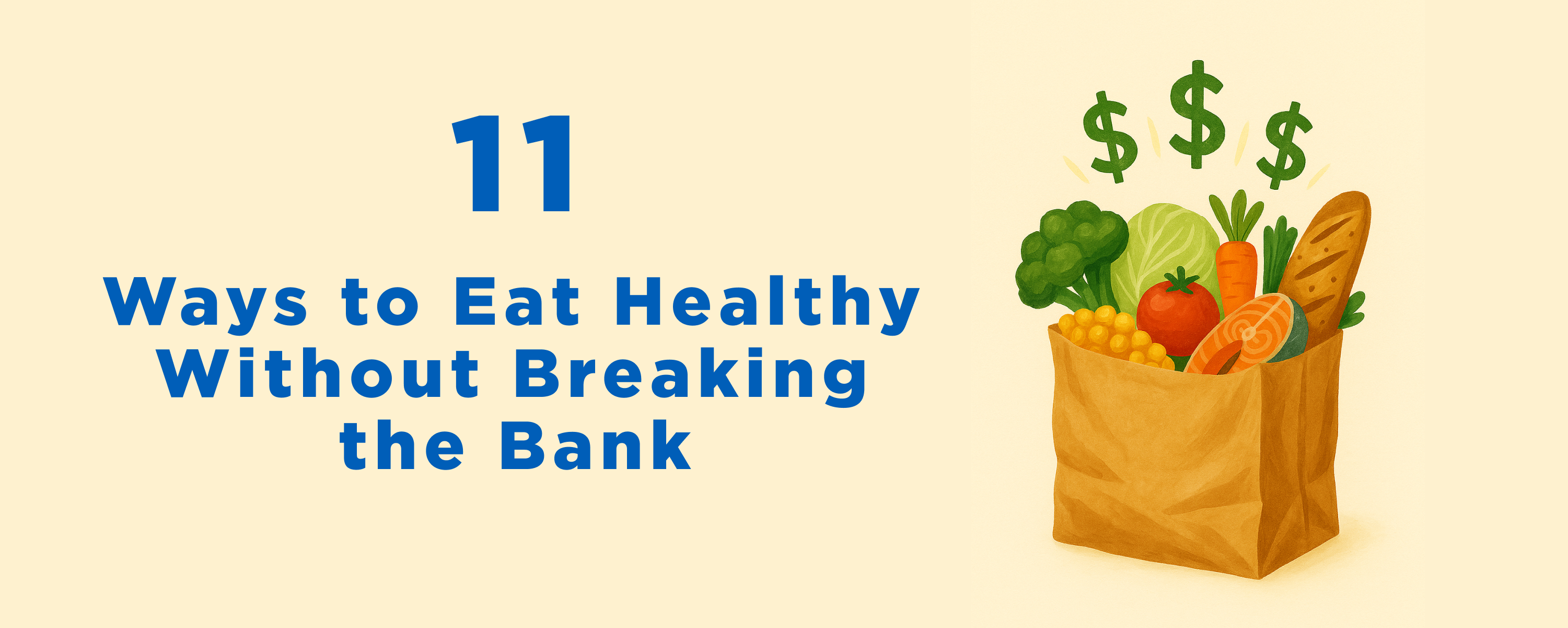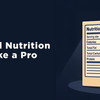Healthy Eating on a Budget – 11 Ways to Eat Healthy Without Breaking the Bank

Data has shown that in 2023, Americans spent about $330 a month eating out, that’s nearly $4,000 a year! Eating healthy doesn’t have to mean emptying your wallet.
With the right strategies, you can enjoy a balanced, nutritious diet without overspending.
Here’s how to make smart food choices that are kind to both your body and your budget.
1. Plan Your Meals Around Sales and Seasonal Produce
-
Before heading to the grocery store, take a few minutes to check weekly flyers and digital coupons. Planning meals around what’s on sale can significantly reduce your food costs.
-
Opt for seasonal fruits and vegetables, which are often cheaper and fresher than out-of-season options.
2. Buy in Bulk and Store Properly
-
Purchasing items like grains, beans, nuts, and seeds in bulk can be much more cost-effective. Invest in airtight containers to store these foods and keep them fresh longer. For meat and fish, buying in larger quantities and freezing portions can also save money.
-
Keep an eye out for large quantity sales for foods you eat on a regular basis. While it may seem counterintuitive to spend more, you will be saving money in the long term.
Food Storage Pro Tip: If you are tired of throwing out vegetables that you bought and then didn't eat, don't put veggies in the crisper (where vegetables go to die). Put them on the shelf or in the door. Just like making unhealthy foods accessible, easy access to healthy foods makes you more likely to actually eat them.
3. Plant-Based Proteins
-
Meat can be one of the most expensive items on your shopping list. Depending on your diet and preferences, consider incorporating more plant-based proteins like beans, lentils, chickpeas, and tofu into your meals.
4. Cook at Home
-
Don’t fall into the trap of eating out every night! Eating out or ordering takeout can quickly drain your budget. Instead, cook at home where you have control over the ingredients and portion sizes. Preparing meals at home allows you to make more budget-friendly choices and enjoy healthier options. By focusing on home-cooked meals, you'll keep more money in your wallet and benefit from a more nutritious diet.
5. Master Meal Prepping
-
Meal prepping is a game-changer for those looking to save money and eat healthily. By dedicating a few hours each week to preparing meals in advance, you can avoid last-minute takeout temptations and ensure you always have nutritious options on hand.
-
Start by planning simple, versatile meals that use similar ingredients to minimize costs, like grilled chicken, roasted vegetables, and quinoa. Store them in portioned containers so you can grab and go during busy days. Not only does meal prepping reduce food waste, but it also helps you stick to your dietary goals without the stress of daily cooking.
6. Avoid Processed and Pre-Packaged Foods
-
Convenience foods, while tempting, are often more expensive and less healthy. These items usually contain high levels of sugar, salt, and unhealthy fats. Focus on whole foods like fresh produce, whole grains, and raw proteins, which are not only cheaper but also more nutritious.
7. Stick to Your Grocery List
-
Impulse buys can add up quickly, especially when you’re shopping hungry. Before you go shopping, make a list based on your meal plan and stick to it. This simple strategy helps you avoid unnecessary purchases and stay within your budget.
8. Choose Store Brands Over Name Brands
-
Store brands are often just as good as name brands, with the added benefit of a lower price tag. Don’t be swayed by fancy packaging – compare ingredients and nutritional information to ensure you’re getting the same quality for less.
9. Frozen and Canned Produce
-
Frozen and canned fruits and vegetables are excellent budget-friendly alternatives to fresh produce, especially when it’s out of season. Look for options without added sugars, salts, or preservatives. They’re just as nutritious and often more affordable.
10. Reduce Food Waste
-
One of the easiest ways to save money is to waste less food. Be mindful of portion sizes and get creative with leftovers. For example, use leftover vegetables in a stir-fry, toss fruit into a smoothie, or make a hearty soup with whatever’s in the fridge.
11. Grow Your Own Herbs and Vegetables
-
Even if you don’t have a lot of space, growing your own herbs, lettuce, or tomatoes can be a fun and cost-effective way to access fresh produce. Start small with easy-to-grow plants in pots or a small garden bed.
Final Thoughts
Healthy eating on a budget is all about making smart, intentional choices that align with your financial goals and nutritional needs. Remember, it’s not about perfection – small, consistent changes can lead to big savings and better health over time.








